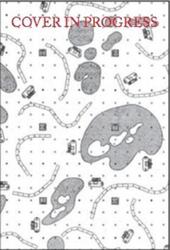
|
Architecture and Dystopia
Paperback / softback
Main Details
| Title |
Architecture and Dystopia
|
| Authors and Contributors |
Edited by Dario Donetti
|
| Physical Properties |
| Format:Paperback / softback | | Pages:296 | | Dimensions(mm): Height 150,Width 230 |
|
| Category/Genre | Architecture |
|---|
| ISBN/Barcode |
9781945150944
|
| Audience | | Postgraduate, Research & Scholarly | |
|---|
| Edition |
English ed.
|
|
Publishing Details |
| Publisher |
Actar Publishers
|
| Imprint |
Actar Publishers
|
| Publication Date |
30 October 2019 |
| Publication Country |
United States
|
Description
A homage to the 1973 publication of Architecture and Utopia by Manfredo Tafuri, this book is devoted to the radical experiences of the 1960s and to their consequences for the most recent developments in contemporary architecture. As a response to the profound crisis of Western culture the emerged in the 1960s, radical artists from Italy, Austria, England and Japan called into question the foundations of modernist utopias. They transmuted the difficulties of capitalism into a repertory of startling images that revealed the disturbing realities of consumer society, even in those places still resistant to the penetration of modern architecture. Their model, though exhausted in the space of experimentation, went on to inspire a generation of architects, from the High Tech movement to Rem Koolhaas, who sought to employ the paradigm of dystopia as both a visionary and a constructive method, one which could operate on the architecture of late capitalism and generate unexpected possibilities for urban planning. The goal of this book is to explore these possibilities, thus initiating an open dialogue about the legitimacy of this critical category.
Author Biography
Dario Donetti holds a PhD in Art History from the Scuola Normale Superiore di Pisa (2016). He previously studied in Paris and Florence, where he earned an MA (2008) in Architectural History from the Universit degli Studi di Firenze. He has co-organized exhibitions and conferences, ranging from Early Modern topics to contemporary theoretical debates, and he is the author of many publications devoted to Tuscan Renaissance and Italian architecture of the twentieth century. He is currently a Wissenschaftlicher Mitarbeiter at the Kunsthistorisches Institut in Florenz - Max-Planck-Institut.
|